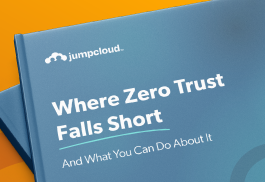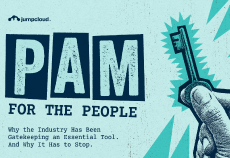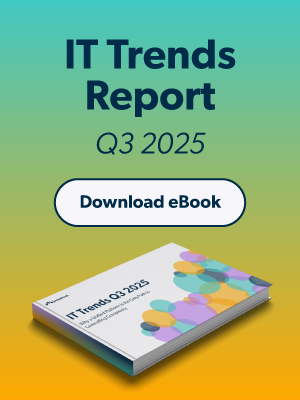Many organizations are moving to a Zero Trust model to protect their users, systems, and data. It is a strong security framework but many IT teams hit a wall when trying to roll it out fully. The issue often comes down to using multiple disconnected tools.
When identity, device security, access control, and monitoring are all handled by separate platforms, things get messy.
Policies are harder to enforce. Admins spend more time jumping between systems. And visibility into what is actually happening across the environment becomes limited.
This is exactly why unifying your Zero Trust initiatives is so important.
A single platform that connects core security functions makes it easier to implement Zero Trust, reduce risk, and scale protection as your environment grows.
Fragmented Tools Make Zero Trust Hard To Implement
According to Gartner, only 16% of organizations say their Zero Trust strategy extends to at least 75% of their users, devices, apps, and infrastructure. Most are still working with partial coverage. And partial Zero Trust coverage leads to security gaps and inconsistent policy enforcement.
The issue usually appears when teams try to move beyond the initial rollout. Early steps like enforcing multi-factor authentication (MFA) or limiting admin access are manageable. But scaling across the entire environment is as complex as it gets.
That’s because core Zero Trust functions like:
- Identity and access management (IAM)
- Device trust and endpoint visibility
- Privileged access management (PAM)
- Logging and monitoring
Are often spread across different tools. Each tool might work well on its own, but they often do not integrate smoothly. That leads to operational silos and policy gaps. Over time, this adds up to slower responses, more human error, and increased security risk.
The Benefits Unified Zero Trust Tools Offer
Unifying key Zero Trust functions within a single platform brings clarity, control, and speed to your security operations. It allows your team to see the full picture, apply policies consistently, and respond faster to changing conditions or threats.
Unification provides organizations with:
1. Centralized Identity and Access Control
With a unified IAM system, you get a single source of truth for users and roles.
That makes it easier to enforce MFA, apply least privilege by default, and automate access decisions based on real-time context.
You also avoid the issues that come from syncing identities across multiple tools. There is less risk of duplicate accounts or outdated access permissions slipping through the cracks.
2. Consistent Device Trust Enforcement
Every login request should consider the device being used. Is it encrypted? Is the OS up to date? Has it passed a recent security check? These are questions that matter.
With a unified platform, you can automatically check device health before allowing access. You can also block or limit access from devices that fall out of compliance, like personal laptops or phones missing endpoint protection.
A centralized view of all devices makes it easier to track risks and close gaps.
3. Simplified Privileged Access Management
Privileged accounts require extra layers of control, but in many environments, they are managed separately from standard identity and access processes. That disconnect increases risk.
Unifying PAM capabilities like just-in-time access, session monitoring, and credential vaulting ensures that elevated access is granted only when needed and always monitored.
It also means your team can manage all access — regular or privileged — under one policy framework.
4. Integrated Monitoring and Reporting
Fragmented visibility is one of the biggest reasons Zero Trust programs fail to scale. If you cannot see what is happening across your environment in real time, you cannot enforce policies or respond effectively.
Unification brings logs, alerts, and behavioral data into one system. That shortens investigation cycles, simplifies compliance reporting, and enables smarter, faster responses to risk.
With unified monitoring, you know who accessed what, from where, and under what conditions — without needing to cross-reference multiple systems.
How JumpCloud Helps Organizations Streamline Zero Trust
JumpCloud brings these Zero Trust capabilities together into one cohesive platform. Instead of juggling separate tools for IAM, device posture, PAM, and visibility, you get one interface and one policy engine for all of it.
With JumpCloud, you can:
- Enforce MFA, conditional access, and least privilege at scale
- Automatically evaluate device health before access is granted
- Secure privileged accounts with vaulting, session controls, and approvals
- Log and monitor access across systems in real time
- Apply consistent policies as your environment grows
This unified approach not only reduces operational overhead but also removes the risk introduced by tool sprawl. Your security posture becomes easier to manage, more transparent, and far more resilient to change.
Take Your Zero Trust Journey Forward with Clarity
Security policies are only as strong as the tools behind them. If those tools are disconnected, Zero Trust becomes harder to implement and even harder to scale.
Zero Trust works best when your environment is connected and consistent. A unified platform gives you that consistency. It removes guesswork, closes gaps, and gives your team the tools to apply policies in a way that scales.
Unification is about doing things more efficiently, with fewer tools and stronger oversight. That is what sets successful Zero Trust programs apart.
The path to full Zero Trust coverage gets a lot less complicated with clarity.
If your current setup feels too complex or you are not sure where the gaps lie, check out the Zero Trust Playbook. It outlines what complete coverage really looks like, what it takes to achieve it, and how to streamline the entire process from start to scale.






